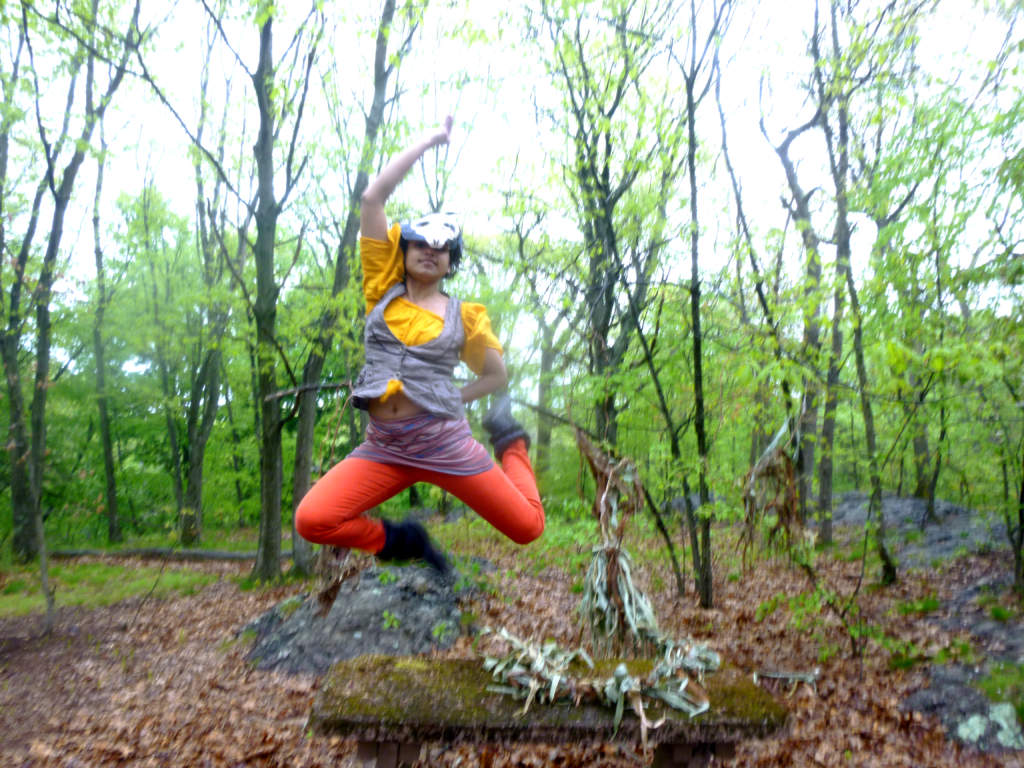Communications Associate, Kiersten Resch, recently interviewed dancer and aMaSSiT 2019 artist Pampi to learn more about her experience with aMaSSiT—a four-month long choreographic program of class “labs” focusing on choreographic skills and tool building. Pampi is a 20-plus-year newcomer/settler/resident of Massachusetts and Wampanoag land. As a darker-skinned, nonbinary, second-genx casteD-Bengali culture worker, Pampi flourishes the intersection of healing and education to develop community-centered art that releases creative potential and drives collective change-making. As the founder of Divine Dance Company, Pampi hopes they successfully acknowledge the complex history of colonialism for both European and Hindu cultures when they perform. You can see Pampi and Divine Dance Company perform with other aMaSSiT 2019 artists at The Dance Complex on June 22nd at 8pm and June 23rd at 7pm!
Interview has been edited for clarity
Q: What has your experience been like during aMaSSiT 2019?
A: My experience at aMaSSiT has been essential for modeling the kind of support dancemakers in general need—the regularity, the input, the conversations, and the feedback. Hearing how long-term practitioners and fellow cohorts with formal dance training read diverse dance bodies has been an important leveling I have been seeking for over two decades.
Q: How has the program helped you artistically and professionally?
A: Both seasoned workshop facilitators and my cohorts are studious and thoughtful. They asked insightful questions that allowed me to push clarity. I enjoyed the mix of questions and offerings.
Programs like aMaSSiT are crucial in establishing a place to ground hopes, desires, fears and searching that move our precious animal bodies in community. Dancers have a deep knowing that we fight for every day. We have the least infrastructure in the state of any profession. We know staying in our bodies is wellness. Staying in our bodies is resistance.
Q: What about the final showing are you most looking forward to?
A: I look forward to pushing myself to go beyond the shells of dances I typically make and really fill them in with satisfying movements that both the form I am developing, contemporary temple, and I myself am capable of manifesting. I also look forward to cheering on my cohorts as we blossom our pieces for our communities.
Q: What did you discover about the dance community during aMaSSiT 2019?
A: I was affirmed that choreographers need community to have the confidence to experiment and create movement experiments that push beyond plateaus we find ourselves in when in isolation. Innovation starts with community that centers inclusive dance making and one rooted in municipal support. I was affirmed that there is potential to create a common dance language between diverse forms that moves beyond cultural subjectivity. We are just at the beginning, but seeing a glimpse of this filled me with hope that people embodying marginalized experiences like myself might belong one day.


